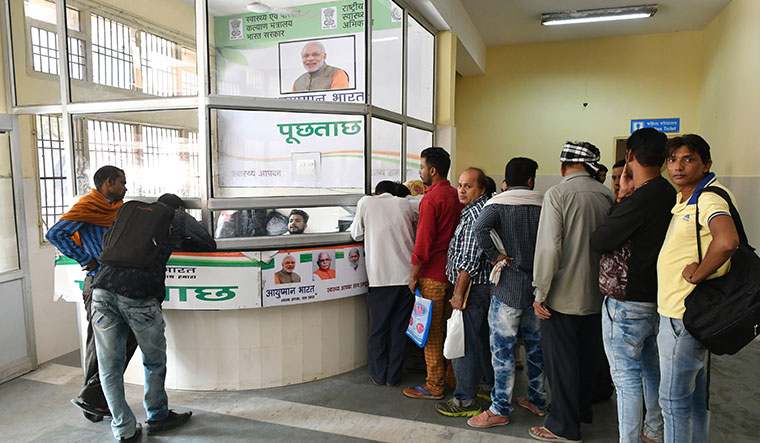Even as the health ministry’s budget has seen a small hike—Rs 61,398 crores, up from Rs 54,302 crores from the last budget—the lion’s share of the funds has gone to the government’s mega health insurance scheme, Pradhan Mantri Jan Aarogya Yojana (PMJAY). The scheme, launched as a pre-poll bonanza last budget, promises a coverage of Rs 5 lakh per family for secondary and tertiary care procedures for 50 crore people.
read more
- Ayushman Bharat PM Jan Arogya Yojana: Delhi HC issues notice to govts over BJP MPs' plea seeking its implementation
- Kerala having to pay more than 80 per cent of expenses under Ayushman Bharat PM-JAY scheme, RTI reveals
- Cabinet approves health coverage for all senior citizens above 70 under Ayushman Bharat
- The Science and Skepticism of Homeopathy: Debating its Place in Modern Healthcare
Though the National Health Agency, the implementing agency for PMJAY, had asked for Rs 7,400 crores for this financial year, they received Rs 800 crores less in the budget. The total estimate for the scheme (the Centre's share is 60 per cent; it is 90 per cent in the northeast) is Rs 12,000 crores. The NHA officials maintain that the small decrease in funds that they had demanded originally will not affect the scheme's implementation, even as they target a beneficiary base of 50 lakh to one crore.
The second part of Ayushman Bharat—setting up of 1.5 lakh health and wellness centres—that has received less attention than the insurance scheme, has received Rs 1,349 crores, up from the Rs 999 crores from last year. This is a welcome move, given that experts have often emphasised the role of preventive healthcare in reducing the rising burden of non-communicable diseases on the healthcare system.
The target for upgrading sub-centres to health and wellness centres for this year (2018-19) is 15,000. Of this, 8,000 centres have been completed in 35 states and UTs, a ministry official told The WEEK.
In 2019-2020, the ministry is looking at an ambitious target of upgrading an additional 25,000 centres. “Though we have a target of 15,000 for 2018-19, we had approved 21,000 centres. The extra 6,000 centres will also need to be completed this year,” the official said.
“What we are telling the states is that finish upgrading 30 per cent of the eligible centres in the next year. So, our estimate is that the target will go beyond 25,000,” he said.
In that context, an increased budget allocation was certainly an encouraging sign, the official said.
However, a section of the medical fraternity felt that the health budget is “disappointing”. For instance, the Indian Medical Association has pointed out that the health budget remains at 1 per cent of the GDP, as opposed to the demand for 2.5 per cent of the GDP. “Announcing a new AIIMS (the 22nd AIIMS is set to come up in Haryana, it was announced in the budget speech) without a necessary financial support is gimmick, and the poor condition of the AIIMS announced previously is a testimony to this,” said Dr Ravi Wankhedkar, president, IMA. The budget allocated for Pradhan Mantri Swasthya Surakhsha Yojana (the scheme under which new AIIMS are being set up) has gone only marginally from Rs 3,825 crore to Rs 4,000 crore.
Wankhedkar said that the figures of beneficiaries under Ayushman Bharat (10 lakh) are misleading as these were numbers from government hospitals—where people were anyway getting free treatment—and from the existing state schemes. Wankhedkar also felt that the government had not provided any relief for small and medium hospitals, one of the largest employment providers, especially for women. “There's also no incentive for opening hospitals in rural and difficult areas,” he said.



